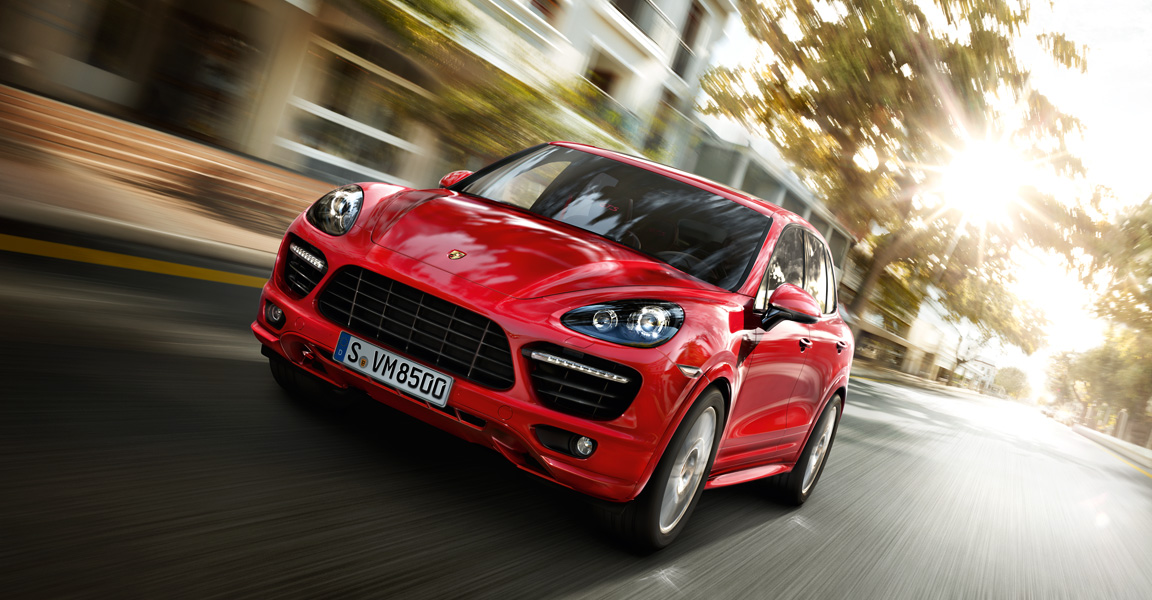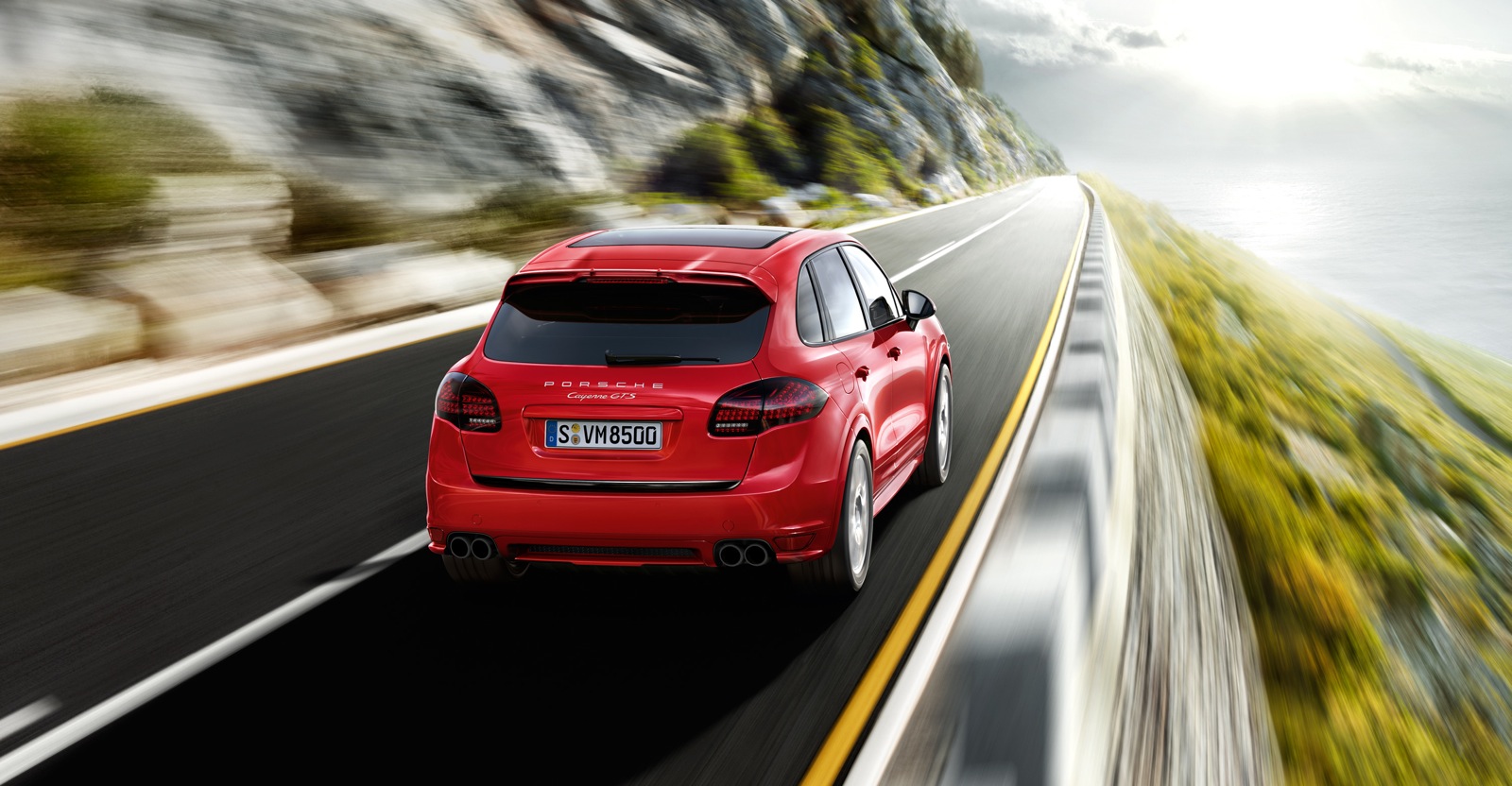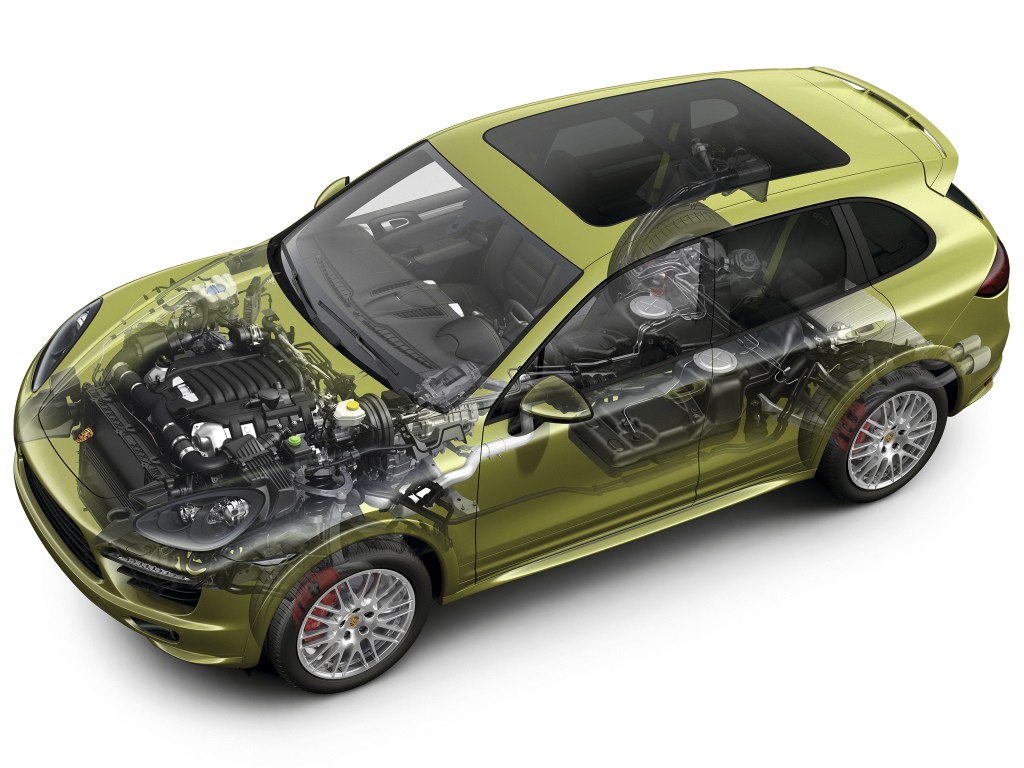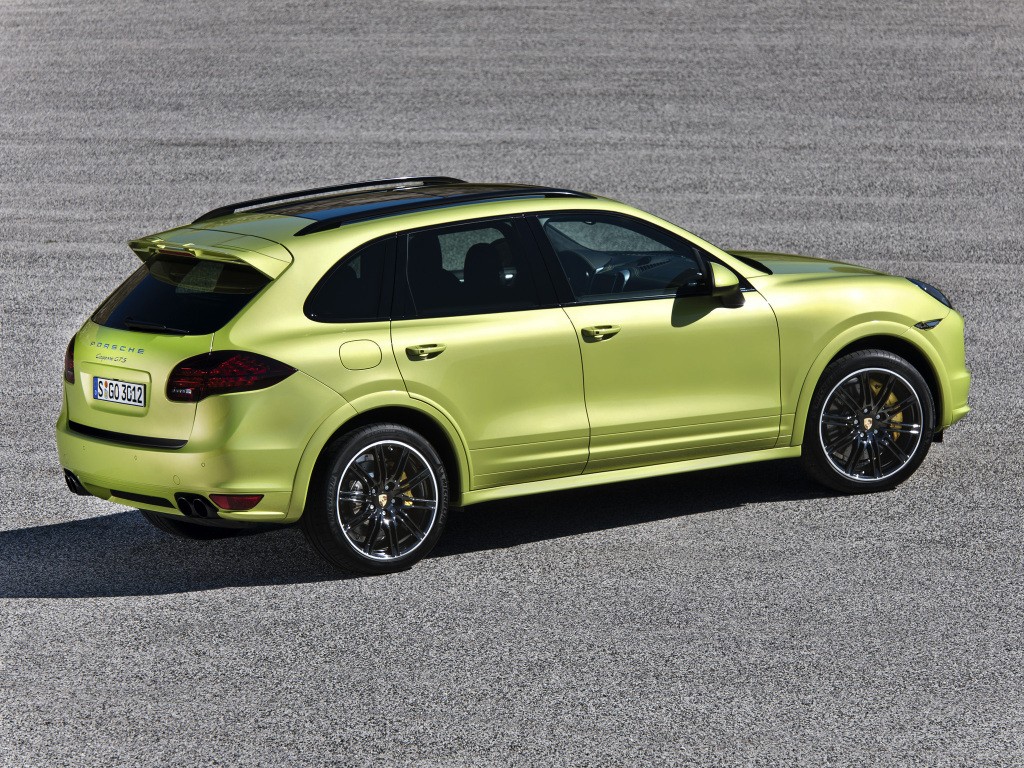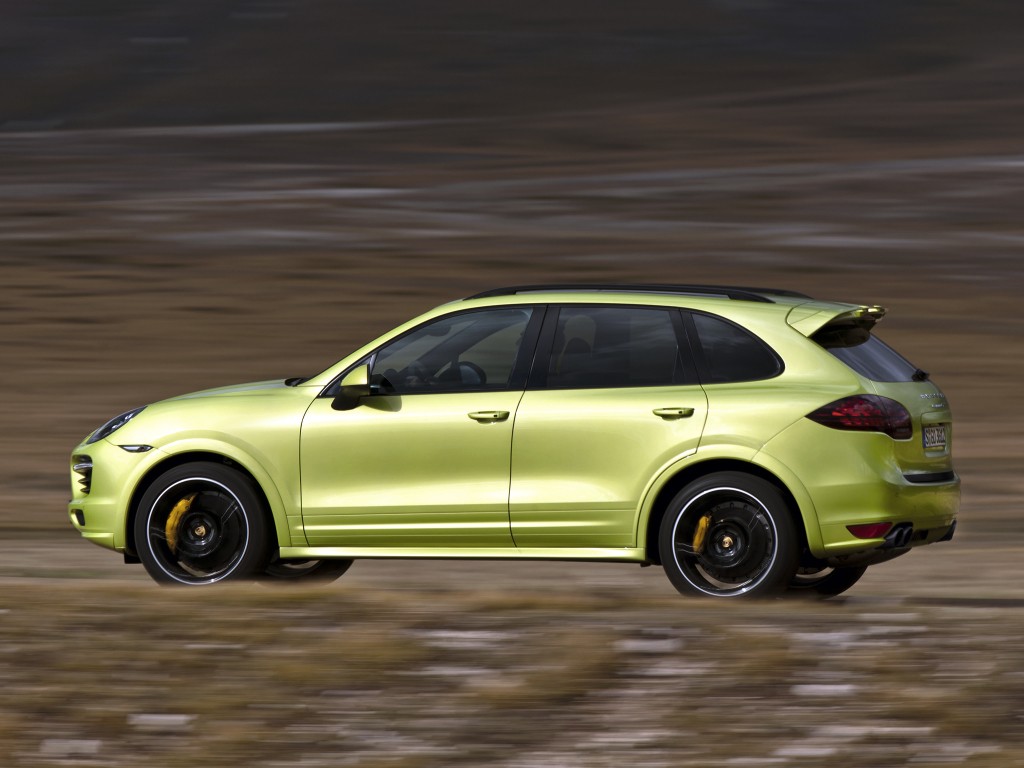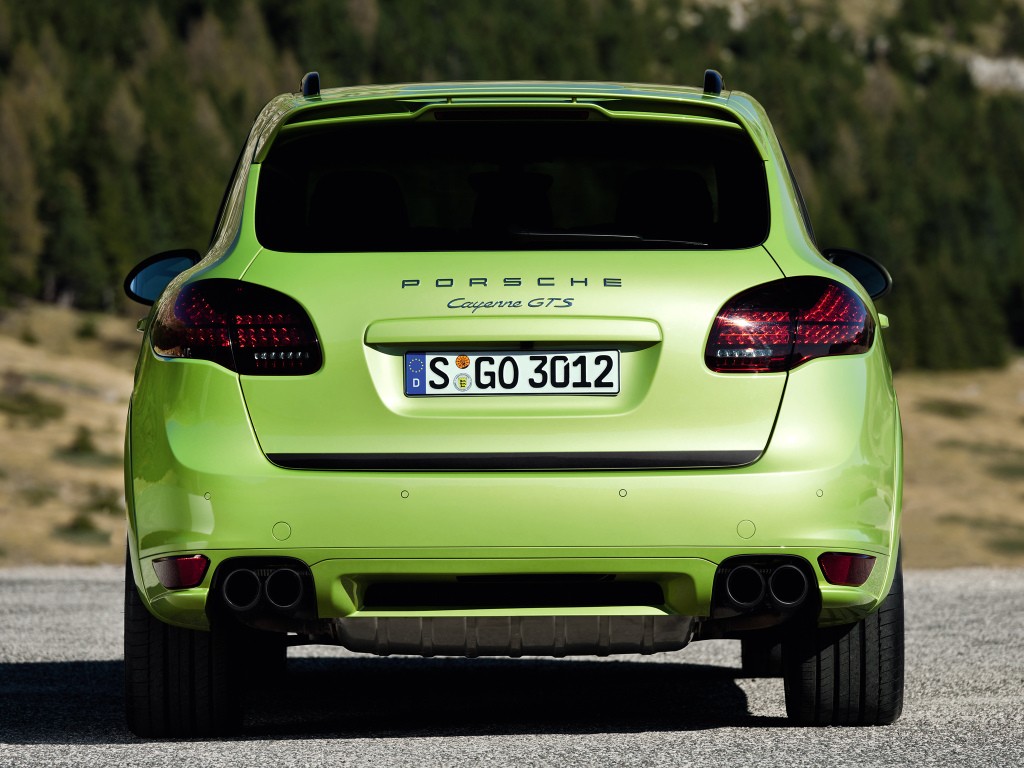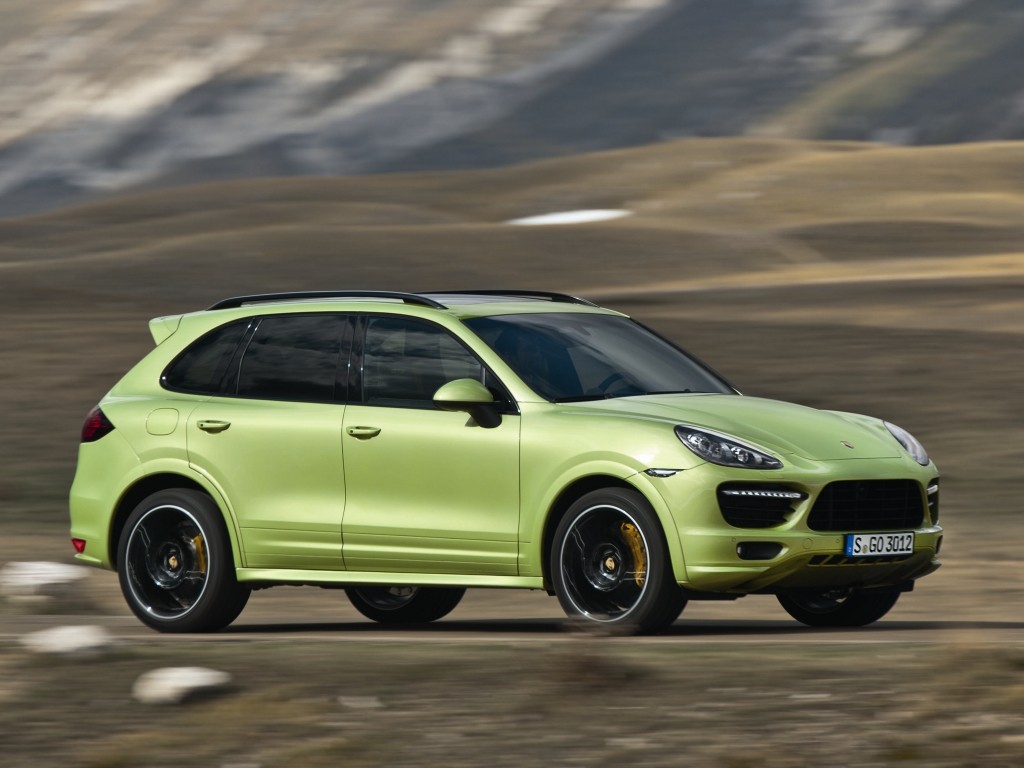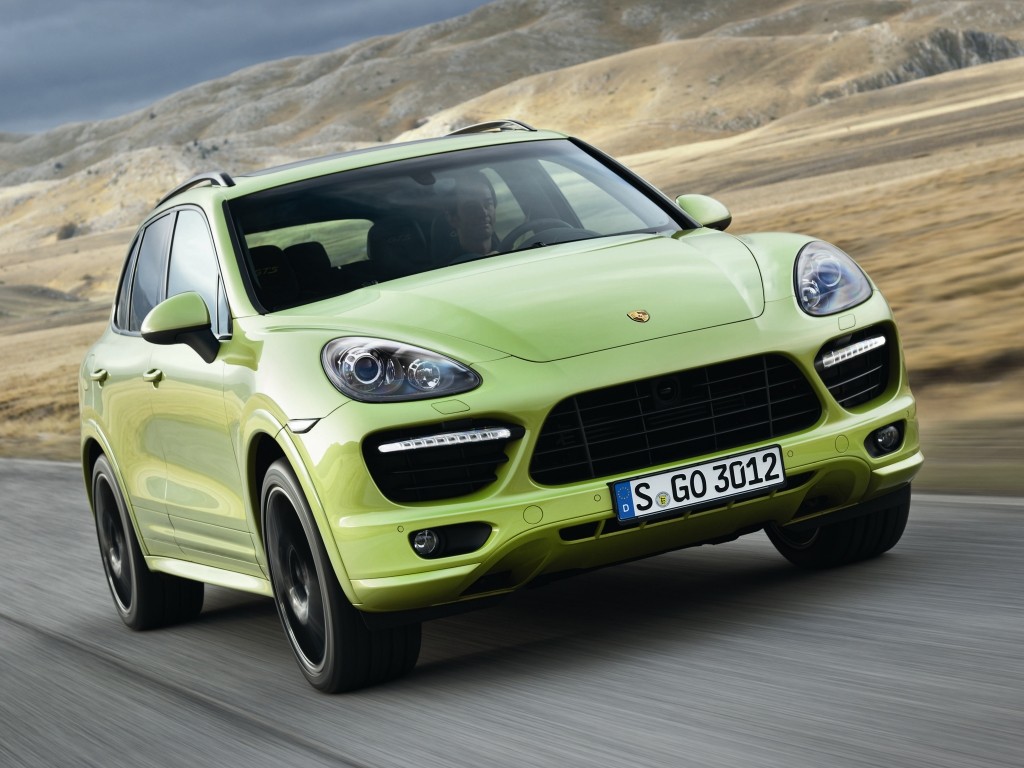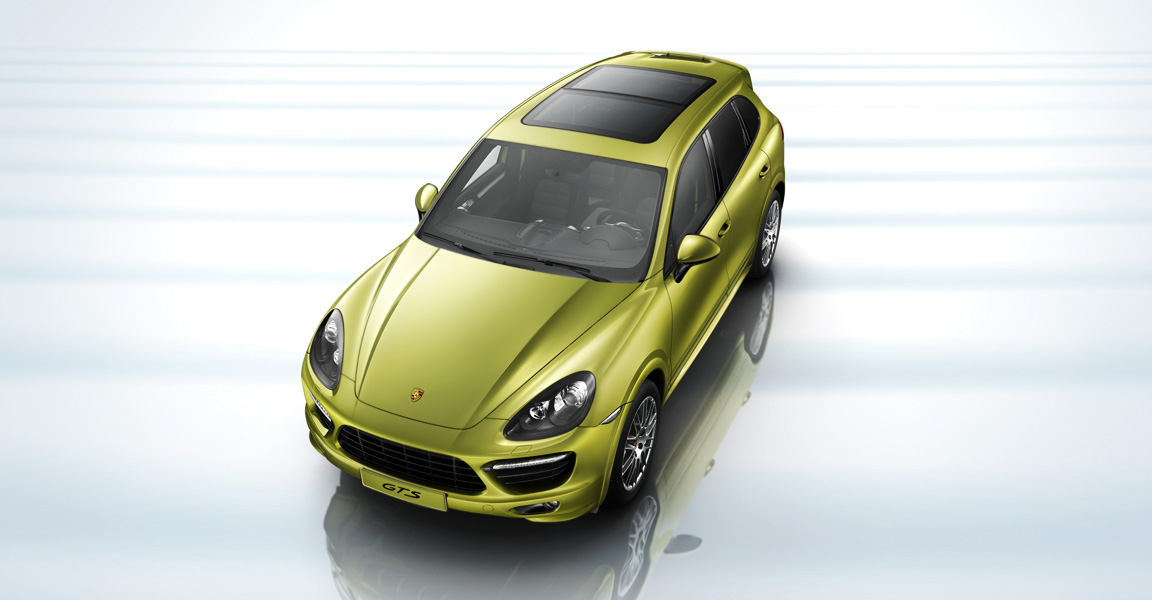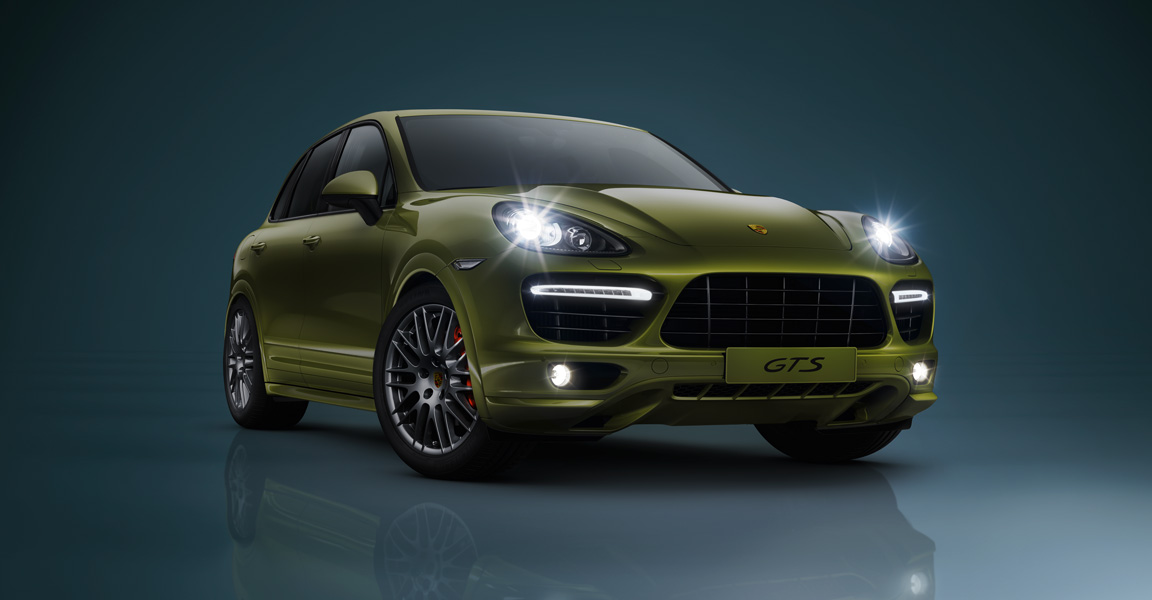(2013 – 2014) Porsche Cayenne GTS – Ultimate Guide
The Cayenne GTS was the last station between the Cayenne S and the Turbo version.
For the 2012 model, the luxurious SUV features more performance amenities over the S model.
The first generation of the Cayenne GTS version accounted for 17 percent of the total of the model range sales numbers even though it wasn’t available from the beginning. Considering this, the Porsche management decided to offer that version again, for the second generation. This time, the GTS was launched just two years after the introduction of the new generation.
The GTS had a slightly different appearance than the S version. It featured the Porsche Dynamic Light System (PDLS) as standard. The typical characteristic of the Porsche Cayenne GTS was the front section with larger cooling air intakes – similar to the Cayenne Turbo – and a distinctive front apron with additional air intakes. Also taken from the Cayenne Turbo was the light graphic with front lights in the outer air intakes and four LED spots for the daytime running lights in the main headlights. Special side-sills were added and a twin-wing profile roof spoiler was added to the rear.
Inside, the Cayenne GTS featured a leather interior as standard, including numerous Alcantara trims. The seat center panels the center console armrest and parts of the door panels were covered in Alcantara. The rear seats featured a single seat styling offering better side support for the rear passengers.
The engine was a newly developed 4.8-liter V8 that offered 420 hp. But the most important part of the GTS was the suspension setting, equipped with PASM – Porsche Adaptive Suspension Management, available on the standard steel suspension or for the optional air-suspension.
Pictures
Press Release
Porsche Cayenne GTS
The space, comfort and clear layout of an SUV; the driving fun, dynamics and agility of a sports car: the new Porsche Cayenne GTS is a fusion of two worlds. Focused on sporty performance, the new model combines greater engine output, more dynamic power development and a firmer chassis setup with a lower-slung body yet with a high degree of comfort. Thanks to its own unique setup, the Porsche Cayenne GTS succeeds in transmitting these characteristics to its passengers with particular intensity, stimulating all their senses: unadulterated driving fun. As an uncompromising extension of the GTS concept, introduced into the SUV model line with the predecessor model, the Porsche Cayenne GTS is not merely positioned between the Cayenne S and Cayenne Turbo but is a model with its own distinctive character developed from tip to toe for emotionally-charged sportiness. The sporty focus was also behind the success of the predecessor model. 15,766 units of the first generation Porsche Cayenne GTS were sold, accounting for a 17 per cent share of total Cayenne sales throughout the period it was on sale.
The most important data on the new model: 4.8-litre V8 engine with 420 hp (309 kW); Porsche Traction Management (PTM) with active all-wheel drive; eight-speed Tiptronic S; acceleration 0-100 km/h in 5.7 seconds; top speed 261 km/h; fuel consumption based on the NEDC 10.7 l/100 km; CO2 251 g/km.
The sporty character of the new Cayenne GTS is evident not only in the performance but is also clearly underlined by its exterior. The typical characteristic of the Porsche Cayenne GTS is the front section with its larger cooling air intakes – similar to the Cayenne Turbo – and a distinctive front apron with additional air intakes. Also borrowed from the Cayenne Turbo is the light graphics with characteristic night design recognisable by the front lights in the outer air intakes and by the four LED spots for the daytime running lights in the main headlights. The Cayenne GTS features the Porsche Dynamic Light System (PDLS) as standard.
It is an enhancement of the Bi-Xenon lighting system with integrated dynamic and static cornering lights, speed-dependent driving light control in the guise of country road and motorway light as well as adverse weather light. The inner bezels of the headlights are finished in black.
Special side skirts and distinctly wider wheel arches in body colour shape the side view, enhanced by the window frames in black high-gloss paint. The attention-getter at the rear end is the dominant roof spoiler with twin-wing profile. This increases the downforce on the rear axle even further. The sporty contrasting theme is rounded off by the high-gloss black trim strip on the tailgate, tinted LED tail lights and the two black twin tailpipes.
Power house: eight-cylinder engine with enhanced performance
The new Porsche Cayenne GTS’s engine is the locus of this emotional sportiness. The Cayenne GTS’s power unit is the most powerful naturally aspirated engine in the Cayenne model line and stands for uncompromising power and emotionality. Enhanced driving pleasure on many levels was the goal being pursued in the redevelopment of the 4.8-litre V8 engine. The 20 hp increase in power output compared with the power unit in the Cayenne S is accompanied by an increase in torque of 15 Newton metres; the crankshaft now generates its maximum power of 515 Newton metres at 3,500 rpm.
To make work easier for the naturally aspirated eight-cylinder engine, the engineers in creased the lift of the intake valves by one millimetre to eleven millimetres. The new camshaft required as a result has steeper and higher cams, the valve springs also being strengthened. The valve timing has also been completely reworked as well as the entire engine control. The crank shaft now turns a further five degrees before the intakes and outlets open and shut respectively.
Responsive engine control with sporty feedback
But what sets the eight-cylinder engine in the GTS apart is not the sheer power in itself but the way in which it delivers it. It is more directly responsive yet to the throttle, providing the driver with an even more intense acoustic feedback. The GTS engine’s performanceoriented control is apparent in the way the power unit rapidly revs up, right from the very moment the engine starts. When driving, it ensures an even faster build-up in torque and thus a noticeably quicker responsiveness. The modified engine management system also enables a brief, partial cylinder deactivation when changing gear, with the engine speed adjusting even faster to the transmission speed and with gear change times shortened even further. Especially in Sport mode, which can be selected by the corresponding button on the centre console, the engine control extracts every last ounce of performance potential from the naturally aspirated eight-cylinder engine, which the Porsche Cayenne GTS acknowledges with an engine sound akin to that of a racing car engine. When the foot is taken off the accelerator, the eight-cylinder engine responds with a low-frequency rumble and with the so-called backfire when changing down.
Sport car-like acoustic sound experience
The Porsche Cayenne GTS’s sound experience is intensified yet further by the specially tuned intake and exhaust acoustics: it is the first Cayenne to leave its occupants in no doubt whatsoever about its breathing rate, courtesy of its twin-flow Sound Symposer system. The new system comprises two acoustic channels terminating in the A-pillars. When the driver activates the Sport button, the channels are opened, directing the sound of the intake pulses into the car body cavities.
Just what greater performance sounds like is also demonstrated by the sports exhaust system, featured as standard, also activated by pressing the Sport button to improve the gas flow rate. Up until the rear silencer, the sports exhaust system, as does the standard exhaust system, comprises two primary and two main catalytic convertors and a centre silencer. The main silencer ensures a meaty and full-bodied acoustic impression. Two exhaust flaps are to be found between the rear silencers and tailpipe covers respectively, which are activated by the sport button and can be controlled as a function of load, speed, engine speed and gear. When open, they improve engine performance by means of improved gas flow rate, the sports exhaust system announcing this loud and clear with its powerful sporty sound.
And yet another feature sets a Porsche GTS engine apart: its Porsche Intelligent Performance. The auto start/stop function, featured as standard, illustrates that efficiency plays a big role even in such a sporty vehicle as the Porsche Cayenne GTS. Despite its greater power output and sportier setup, the Cayenne GTS’s overall fuel consumption is only 0.2 litre higher than that of the Cayenne S.
Faster gear changes: modified Tiptronic and shorter final drive ratios
Power transmission is handled by the eight-speed Tiptronic S as standard. While the automatic transmission’s drive ratios remain unchanged, the gear changes are shorter and sportier. Shorter front and rear axle drive ratios exploit the engine’s free-revving characteristics to achieve superior acceleration performance.
In addition to the pronounced starting torque, the new Porsche Cayenne GTS also features torque enhancement. Not only does this make for a meatier sound but for higher performance as well. When changing up into the next higher gear, the torque of the high revving engine is harnessed for superior acceleration by especially rapid closing of the torque converter lockup clutch. The crisp gear changes feel even sportier and the performance is even higher. The torque enhancement function is only active in sport mode.
Thanks to intelligent shifting programmes, the driver is able to selectively influence the shift behaviour of the Tiptronic S by means of the accelerator and brake pedals. Rapid accelerator pedal movements immediately move the shift points to the dynamic map – without any kickdown. Consequently, quickly removing the foot from the accelerator, for example before bends, suppresses the overrun upshift. In addition, mid-corner gearshifts are also prevented. Under heavy braking, the Tiptronic S quickly changes down into the lower gear to exploit the engine braking effect. Gradient recognition ensures greater uphill acceleration capability and greater downhill engine braking torque.
To ensure the greatest possible sporty driving style immediately when activating the sport button, the shifting characteristic curves of the Tiptronic S switch more quickly into the sportier map than in normal mode. Depending on the driving style and speed, gears seven and eight are no longer engaged and braking downshifts now already occur at lower deceleration in order to be able to improve subsequent acceleration. In normal mode, Tiptronic S allows an especially economic driving style and reduces fuel consumption by shifting up early and shifting down late.
PTM active all-wheel drive, available with PTV Plus as an option
The Porsche Cayenne GTS applies power to the road by means of the Porsche Traction Management system. The PTM with active all-wheel drive involves the rear axle being driven directly. The multiple-plate clutch, electronically-controlled by an electric motor, handles the fully variable distribution of the propulsive force to the front axle with no standard distribution. If the slip on the rear axle increases, for example when accelerating, the multiple-plate clutch intervenes more vigorously to transfer more propulsive force to the front wheels.
By permanently monitoring the driving state, the system can respond both to different driving situations as well as to the driver’s wishes. This enables an additional, driving dynamics-oriented control of the active all-wheel drive, capable of responding both situationally and even preventively, nipping undesired axle slip in the bud.
If desired, the driving dynamics characteristics of the Porsche Cayenne GTS can be optimised yet further with Porsche Torque Vectoring Plus (PTV Plus) as an optional extra. It boosts driving dynamics and driving stability, achieving this through variable torque distribution to the rear wheels as well as an electronically-controlled rear differential lock. Depending on the steering angle and speed, accelerator pedal position and yaw rate and speed, PTV Plus improves steering behaviour and precision by means of precisely modulated braking interventions on the inside rear wheel in question. This results in a direct and dynamic steering action as the car enters the bend. At high speed as well as in bends taken at speed and when the wheels are spinning, the electronically controlled rear differential lock also ensures even greater driving stability.
Sportily firm yet comfortable
The Porsche Cayenne GTS’s outstanding driving dynamics depend crucially on the completely new chassis setup, with lowered body: with steel spring suspension featured as standard, the Porsche Cayenne GTS is 24 millimetres lower than the Cayenne S and 20 millimetres lower with the optional air suspension. The lower ride height gives the new Cayenne GTS a lower centre of gravity, with a perceptible impact on agility when cornering.
Steel spring suspension or air suspension available as an option with PASM adaptive damping system
Both with steel spring suspension and also with the air suspension available as an option, the Cayenne GTS features Porsche Active Suspension Management (PASM). The PASM handles the electronic adjustment of the shock absorber system and actively and continuously controls the damping forces depending on the state of the road surface and driving style. Thanks to a new PASM control strategy coupled with modified chassis mounts, the Porsche Cayenne GTS offers an unprecedented spread between sportiness and comfort. The driver can choose between them at the push of a button. In addition, air suspension, available as an option, allows five different height levels, which are entirely tailored to the performance of the Cayenne GTS and are markedly different from those of a Cayenne S with air suspension.
The RS Spyder design 20-inch wheels further contribute to the Porsche Cayenne GTS’s distinctly sporty handling. Their offset is calculated to place the outer edge of the wheels flush with the wider wheel arches. As the effect of this change is to set the wheels further outboard, the rear axle track width of the new Cayenne GTS is 17 millimetres greater than that of the Cayenne S.
Roll stabilisation as an optional extra
The new Porsche Cayenne GTS’s driving dynamics can be further enhanced by air suspension with PASM and the Porsche Dynamic Chassis Control (PDCC) roll stabilisation system that can be twinned with this chassis variant. PDCC restricts the vehicle’s tendency to lean when cornering, almost completely neutralising it in virtually every driving situation. The PDCC’s lighting fast reflexes coupled with active stabilisers enable it to generate supporting forces before the body can start to tilt when cornering.
The PDCC works by means of hydraulic swivel motors, integrated into the front and rear axle stabilisers. Depending on steering angle and lateral acceleration, the two halves of each anti-roll bar rotate further in opposition to each other, thus generating forces that counteract the vehicle’s tendency to lean. This enables both an extremely comfortable as well as an extremely sporty driving experience, combined with agility of the highest order in every driving speed range as well as optimal cornering behaviour and stable load change behaviour.
New: Sport Chrono Package documents driving dynamics
Porsche is introducing the Sport Chrono Package in the Cayenne GTS as an optional extra in the SUV model line. It comprises a stopwatch on the dashboard and a performance display in the Porsche Communication Management (PCM) system. The stopwatch or the acceleration sensor enables the higher performance values to be recorded, for example as lap times or lateral and longitudinal acceleration. The PCM supports graphical representation, enabling the times to be analysed, for example.
Superior brake system with ceramic option
The brake system in the Cayenne GTS comes from the Cayenne S and handles even arduous demands, such as those encountered during sporty driving, with aplomb. Six-piston aluminium monobloc fixed-calliper brakes and 360 millimetre diameter brake discs are fitted at the front. Braking power at the rear of the Cayenne GTS is provided by four-piston aluminium monobloc fixed-calliper brakes and 330 millimetre diameter discs. All brake callipers are painted red, another point of detail in which the Porsche Cayenne GTS differs from the Cayenne S with its silver callipers.
A further optional extra is the Porsche Ceramic Composite Brake (PCCB) system. The PCCB is visually recognisable by its yellow-painted brake callipers. The brakes respond even faster and more precisely with significantly less force required on the pedal. The PCCB offers high fading stability, especially when braking at high speeds. Another critical advantage of the ceramic brake system is to be found in the extremely low weight of the disc brakes: they are approximately 50 per cent lighter than grey cast iron discs of comparable construction and size.
Exclusive ambience and sports seats as standard
The fusion of exclusivity and sportiness is also apparent in the Cayenne GTS’s interior. It features a leather interior as standard, including numerous Alcantara trims. For example, seat centre panels, the centre console armrest, parts of the door panel as well as the roofliner and pillar trim are executed in Alcantara. The driver and front seat passenger sit on exclusive, eight-way electrically adjustable GTS sports seats. The rear seats with their single seat styling offer rear passengers outstanding side support. With its shift paddles, the SportDesign steering wheel is poised for manual gear changes and blends harmoniously with the puristic interior. The SportDesign steering wheel is also available with a steering wheel rim in Alcantara as an optional extra.
Anyone wishing to equip their Porsche Cayenne GTS even more exclusively can choose from optional interior packages available only for the GTS. They include contrasting stitching in Carmine Red or Peridot on the dashboard, door elements, seats and centre console armrest. The embroidered “GTS” lettering on the headrests, the safety belts and the stitching on the foot mats are retained in the corresponding colour and put the finishing touch on the “GTS line” in the interior.
Options: From seat climate control to lane change assist
A rich array of options is available in the Cayenne programme for further personalisation. The range extends from heated and ventilated seats to four-zone climate control, allowing individual climate control of the rear seat positions, to intelligent assistance systems. These include for example the adaptive cruise control with special functions such as overtaking assistance, cornering speed control and distance warning. The Lane Change Assist (LCA) system, also available as an option, uses two radar sensors in the rear bumper to monitor the lanes on the right and left up to 70 metres behind the vehicle, including the blind spots. The Lane Change Assist system therefore enhances safety and comfort, particularly on motorways. The system is available in the 30 to 250 km/h speed range.
Audio entertainment for every requirement
The Porsche Cayenne GTS has at its disposal the latest generation of audio and communication systems. Not only is a BOSE system available but also the High-End Surround Sound System from Burmester. The optional BOSE Surround Sound System includes a total of 14 speakers, a 200 watt active subwoofer with a Class D output stage and 200 millimetre diameter membrane as well as nine amplifier channels, which ensure an impressive sound experience. This delivers an overall output of 585 watts.
The Burmester High-End Surround Sound system offers superior total output and sound quality. The performance figures demonstrate this to impressive effect: 16 individually controllable loudspeakers, including a 300 watt active subwoofer with Class D output stage and 250 millimetre diameter membrane, 16 amplifier channels and a total output of more than 1,000 watts. The acoustically effective total membrane area is in excess of 2,400 cm2.


